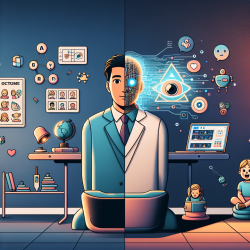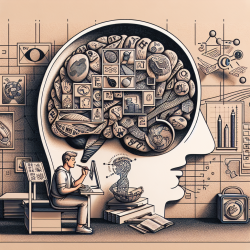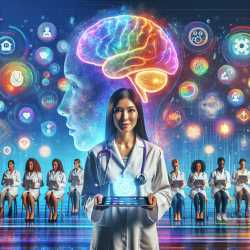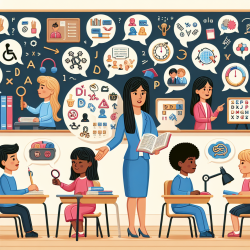Introduction
Artificial Intelligence (AI) is revolutionizing the healthcare landscape, and its potential in speech-language pathology is no exception. The research article "Artificial Intelligence in Healthcare: Perception and Reality" provides a comprehensive overview of how AI can be integrated into healthcare to enhance outcomes, particularly in fields like speech-language pathology. For practitioners at TinyEYE, leveraging AI could mean improved therapy outcomes for children through data-driven decisions and personalized therapy plans.
AI in Speech-Language Pathology: A Promising Frontier
AI offers a range of applications that can be transformative for speech-language pathologists. From automating routine assessments to providing real-time data analysis, AI can enhance the efficiency and effectiveness of therapy sessions. The research highlights how AI can improve diagnostic accuracy and reduce practitioner burnout, enabling therapists to focus more on direct patient interaction and personalized care.
Key Benefits of AI Integration
- Enhanced Diagnostic Tools: AI can analyze speech patterns and language use more accurately, providing therapists with detailed insights into a child's progress and areas needing attention.
- Personalized Therapy Plans: By leveraging AI, therapists can develop customized therapy plans that adapt in real-time based on the child's response, ensuring a more tailored approach to therapy.
- Increased Efficiency: Automating administrative tasks allows therapists to dedicate more time to direct patient care, improving the overall quality of therapy sessions.
Overcoming Challenges
While the potential of AI is vast, its implementation is not without challenges. Ethical considerations, data privacy, and the need for robust data sets are critical issues that must be addressed. The research emphasizes the importance of integrating AI into medical education to prepare future practitioners for the evolving landscape of healthcare.
Encouraging Further Research
For practitioners at TinyEYE, staying informed about the latest developments in AI and its applications in speech-language pathology is crucial. Engaging in further research and continuous education will ensure that therapists are equipped with the latest tools and knowledge to enhance therapy outcomes for children.
Conclusion
AI is not a replacement for the human touch in therapy but a powerful tool that can augment the capabilities of speech-language pathologists. By embracing AI, practitioners can provide more effective, personalized care, ultimately leading to better outcomes for children. To read the original research paper, please follow this link: Artificial Intelligence in Healthcare: Perception and Reality.










